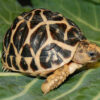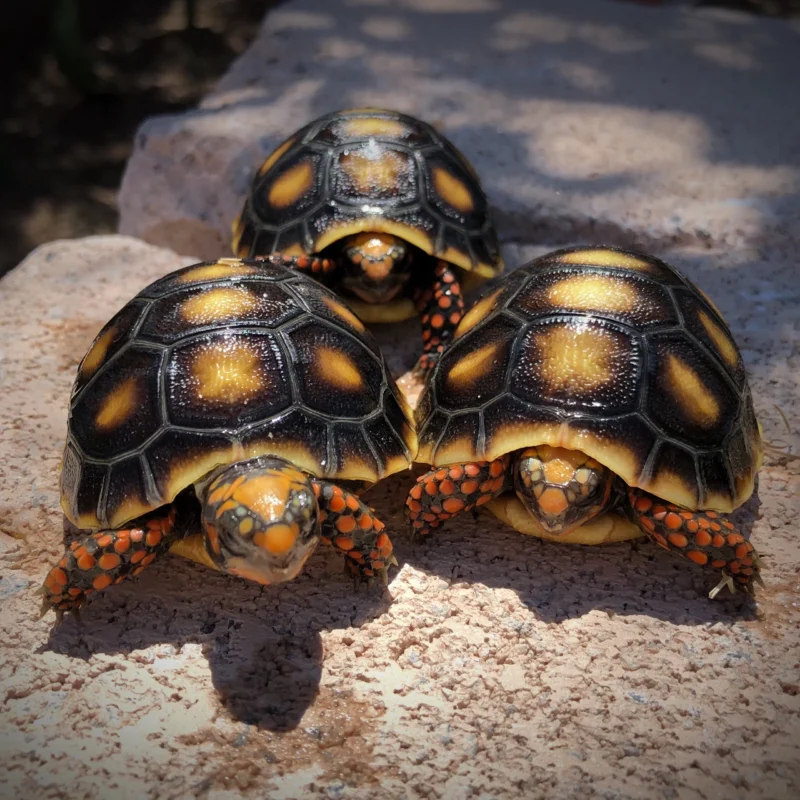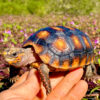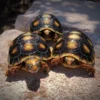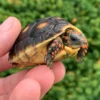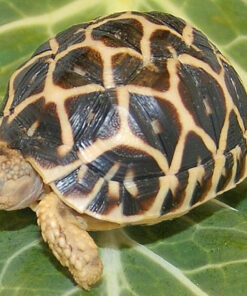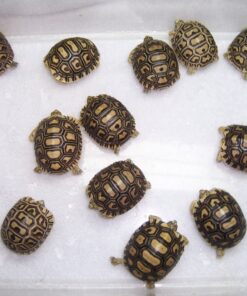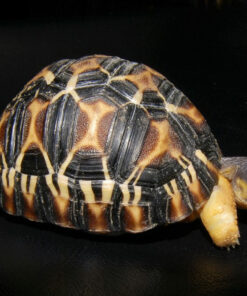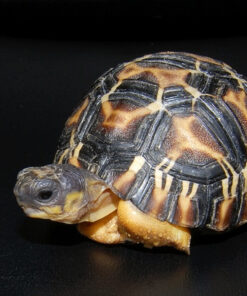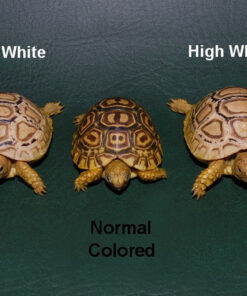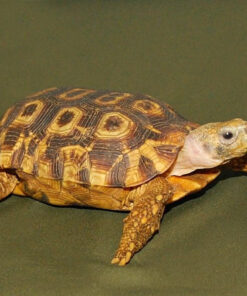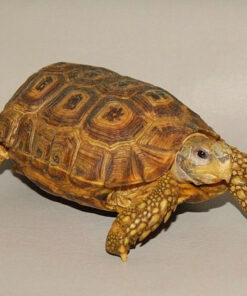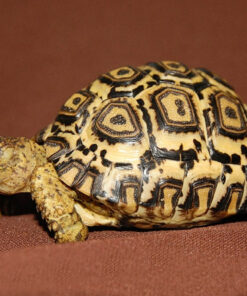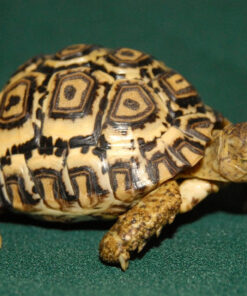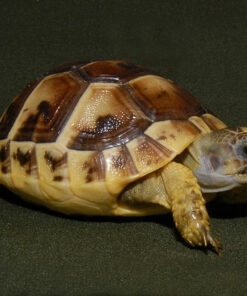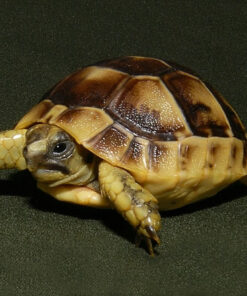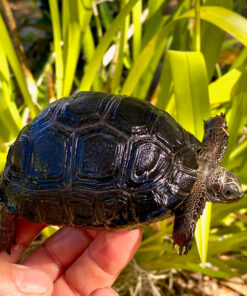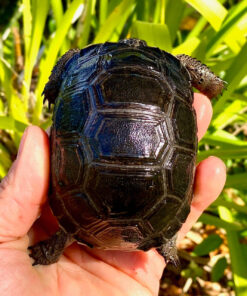$274.99
These Field Collected Tortoises Are Approximately 5 – 8 Inches In Shell Length. This Is A Mid Sized Species With Adults Growing To About 14 Inches. This Is A Great Pet For A First Time Reptile Owner.
Category: TORTOISE for sale
Juvenile Redfoot Tortoise for Sale: A Complete Guide to Buying and Caring for Baby Redfoot Tortoises
Are you considering adding a juvenile **redfoot tortoise** to your collection? These charismatic, colorful tortoises are known for their vibrant personalities and striking appearance. A baby redfoot tortoise is not only visually stunning but also a fascinating, long-term companion that can bring decades of joy to your home. we’re excited to offer healthy and ethically bred **redfoot tortoises for sale** to reptile enthusiasts of all levels.
In this detailed guide, we’ll explore everything you need to know about buying and caring for a baby redfoot tortoise. Whether you’re a beginner or a seasoned reptile owner, you’ll find all the essential information to ensure that your new pet thrives in its environment.
What Is a Redfoot Tortoise?
The **redfoot tortoise** (Chelonoidis carbonarius) is native to South America, particularly in regions such as the Amazon Basin, Venezuela, Colombia, and Brazil. These tortoises are known for their distinctively colorful legs, which display bright red, orange, or yellow markings, giving them their name. They also have yellow or orange scales on their heads and a dark, slightly domed shell that grows to a medium size, making them one of the most popular pet tortoises in the world.
Key Features of the Redfoot Tortoise:
– **Size**: Juvenile redfoot tortoises, or baby redfoot tortoises, typically start out at 2-3 inches in length. Adults can reach up to 12-14 inches in length, with some larger specimens growing even bigger.
– **Color**: Their striking red, yellow, or orange markings on their legs and head set them apart from other tortoise species. These vivid colors remain prominent throughout their lives.
– **Lifespan**: With proper care, redfoot tortoises can live up to 50 years or more in captivity, making them a lifelong companion.
– **Temperament**: Known for their friendly and curious nature, redfoot tortoises are generally docile and calm. They’re shy at first but can become quite interactive over time.
Why Buy a Redfoot Tortoise?
If you’re looking for a visually striking, gentle, and low-maintenance pet, the redfoot is an excellent choice. Baby redfoot tortoises are particularly charming, and watching them grow into healthy adults is a rewarding experience for any reptile enthusiast.
Here are some reasons why buying a redfoot might be the perfect addition to your family:
1. **Vibrant Appearance**: Few tortoises have the striking appearance of the redfoot tortoise, with their bold colors standing out in any enclosure.
2. **Manageable Size**: Unlike larger tortoise species, redfoot remain a manageable size, making them suitable for both indoor and outdoor enclosures.
3. **Interactive Nature**: Redfoot tortoises are known for their curiosity and are more interactive with their owners than many other tortoise species. Over time, they may even recognize their caregivers.
4. **Low Maintenance**: Once their habitat is properly set up, redfoot tortoises require relatively little daily care, making them ideal for busy pet owners.
5. **Long Lifespan**: Redfoot tortoises can live for decades, offering a lifelong bond and companionship.
At **newyorkreptiles.com**, we take great care to ensure that our **baby redfoot tortoises for sale** are healthy, well-cared-for, and ready to thrive in their new homes.
How to Buy a Redfoot Tortoise
When purchasing a redfoot, it’s essential to choose a reputable breeder or seller to ensure the health and well-being of your new pet. At **newyorkreptiles.com**, we are committed to ethical breeding practices and the proper care of all our tortoises.
How to Care for a Juvenile Redfoot Tortoise For Sale
Caring for a baby redfoot requires attention to their habitat, diet, and environment to ensure they grow into healthy adults. Redfoot are relatively hardy animals, but providing them with the right care from the start is essential to their well-being.
#### 1. **Habitat and Enclosure**
Creating the ideal environment for your baby redfootis crucial to their health and growth. Since redfoot come from tropical climates, their enclosure must replicate their natural habitat as closely as possible.
– **Indoor Enclosure**: A baby redfoot tortoise can be housed in a large indoor enclosure, such as a tortoise table or a glass tank. As juveniles, a 4×4-foot enclosure is a good starting size, but as they grow, you’ll need to upgrade their space to accommodate their adult size.
– **Outdoor Enclosure**: If you live in a warm climate, you may be able to keep your tortoise in an outdoor enclosure. Outdoor setups should provide ample space for roaming, basking areas, shade, and hiding spots. The enclosure should also be escape-proof and protected from predators.
– **Substrate**: The substrate should retain moisture to keep humidity levels high. Cypress mulch, coconut coir, or a mix of soil and sand works well for redfoot . Ensure the substrate is deep enough for burrowing.
– **Temperature & Humidity**: Redfoot thrive in temperatures between 75°F and 85°F, with a basking spot of around 90°F. Humidity levels should be kept between 70% and 80% to mimic the tropical forests they are native to. Use a humidity gauge and mist the enclosure regularly to maintain the right moisture levels.
– **Lighting**: Redfoot tortoises need access to UVB light to help them metabolize calcium and maintain healthy bones. Ensure they receive 10-12 hours of UVB light daily, especially if housed indoors.
#### 2. **Diet and Nutrition**
A baby redfoot tortoise’s diet should be rich in variety and provide all the necessary nutrients for proper growth. These tortoises are omnivores, which means they eat both plant matter and small amounts of animal protein.
– **Staple Foods**: Leafy greens, such as dandelion greens, collard greens, mustard greens, and kale, should make up the majority of their diet. You can also include vegetables like squash, zucchini, and bell peppers.
– **Fruits**: Redfoot tortoises enjoy fruits, but they should only make up about 10-20% of their diet. Offer fruits like papaya, mango, strawberries, and bananas in moderation.
– **Protein**: In the wild, redfoot tortoises occasionally eat insects and carrion. You can provide small amounts of animal protein, such as earthworms, mealworms, or cooked chicken, once or twice a week.
– **Calcium**: Calcium is essential for healthy shell and bone growth. Offer a calcium supplement without phosphorus regularly, and ensure your tortoise has access to a cuttlebone or other calcium sources.
#### 3. **Behavior and Socialization**
Baby redfoot are typically shy and may take time to adjust to their new environment. However, they are also known for their curiosity and may become more interactive as they grow accustomed to their surroundings.
– **Handling**: Redfoot don’t require much handling and can become stressed if handled too frequently. However, gentle handling is fine, especially as they become more comfortable with their caretakers. Always support their body when holding them and avoid sudden movements.
– **Enrichment**: To keep your tortoise engaged and encourage natural behaviors, provide a variety of enrichment items in their enclosure. Rocks, logs, and edible plants encourage exploration, climbing, and foraging.
– **Companionship**: While redfoot are generally solitary, they can live peacefully with other redfoot if provided with enough space. Monitor them for any signs of aggression, particularly between males, and ensure they have enough hiding spots to retreat to if needed.
#### 4. **Health and Veterinary Care**
With proper care, redfoot are hardy reptiles that generally remain healthy. However, it’s essential to monitor your tortoise for any signs of illness and take preventive measures to ensure their well-being.
– **Common Health Issues**: Respiratory infections, shell rot, and parasites can affect redfoot, especially if their enclosure is too cold or humid. Watch for symptoms like lethargy, runny nose, or irregular breathing, and consult a reptile veterinarian if needed.
– **Preventive Care**: Keep your tortoise’s enclosure clean, provide a balanced diet, and ensure proper temperature and humidity levels to prevent health problems. Regular checkups with a reptile-savvy veterinarian can help catch any potential issues early.
Is a Redfoot Tortoise Right for You?
Owning a redfoot is a long-term commitment that requires proper care, space, and attention to detail. If you’re ready to invest the time and effort needed to care for a tortoise, the **redfoot** can make a rewarding and fascinating pet. Their stunning appearance, friendly temperament, and relatively low-maintenance care make them an ideal choice for both beginner and experienced tortoise keepers.
FAQs About Redfoot Tortoises
**Q: How much does a baby redfoot tortoise cost?**
A: The cost of a baby redfoot can vary depending on factors such as age and size. At **newyorkreptiles.com**, we offer competitive pricing for healthy, ethically bred baby redfoot.
**Q: How long do redfoot tortoises live?**
A: With proper care, redfoot can live up to 50 years or more in captivity.
**Q: Can redfoot tortoises live indoors?**
A: Yes, redfoot tortoises can live indoors as long as their enclosure is large enough and meets their temperature, humidity, and lighting needs.
**Q: Do redfoot tortoises need UVB light?**
A: Yes, UVB light is essential for redfoot to properly metabolize calcium and maintain healthy bones.
Conclusion
If you’re ready to welcome a beautiful and unique pet into your life, a **baby redfoot ** from **newyorkreptiles.com** is the perfect choice. With their captivating appearance, gentle nature, and long lifespan, redfoot tortoises are a wonderful addition to any reptile collection. we’re committed to providing healthy and ethically sourced **redfoot**, along with expert guidance to ensure your new pet thrives in its forever home.
Take the next step today—**buy a redfoot tortoise** from us, and start your exciting journey with one of the most stunning and personable tortoises in the world!
Related products
TORTOISE for sale
$349.99
TORTOISE for sale
$199.99
TORTOISE for sale
$249.99
TORTOISE for sale
Baby Giant South African Leopard Tortoise – Exotic Pets for Sale
$399.99
TORTOISE for sale
$174.99
TORTOISE for sale
$1,599.99


